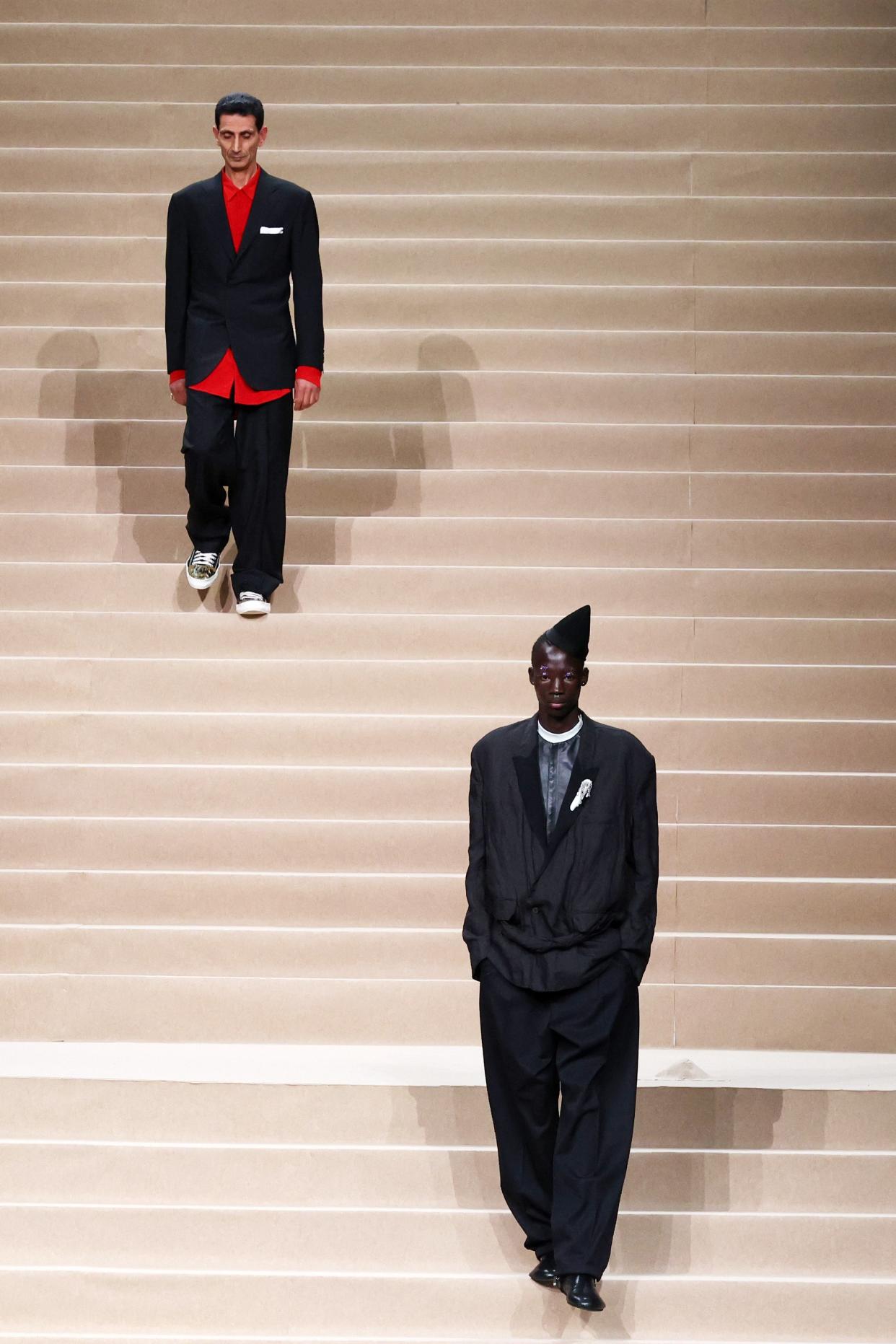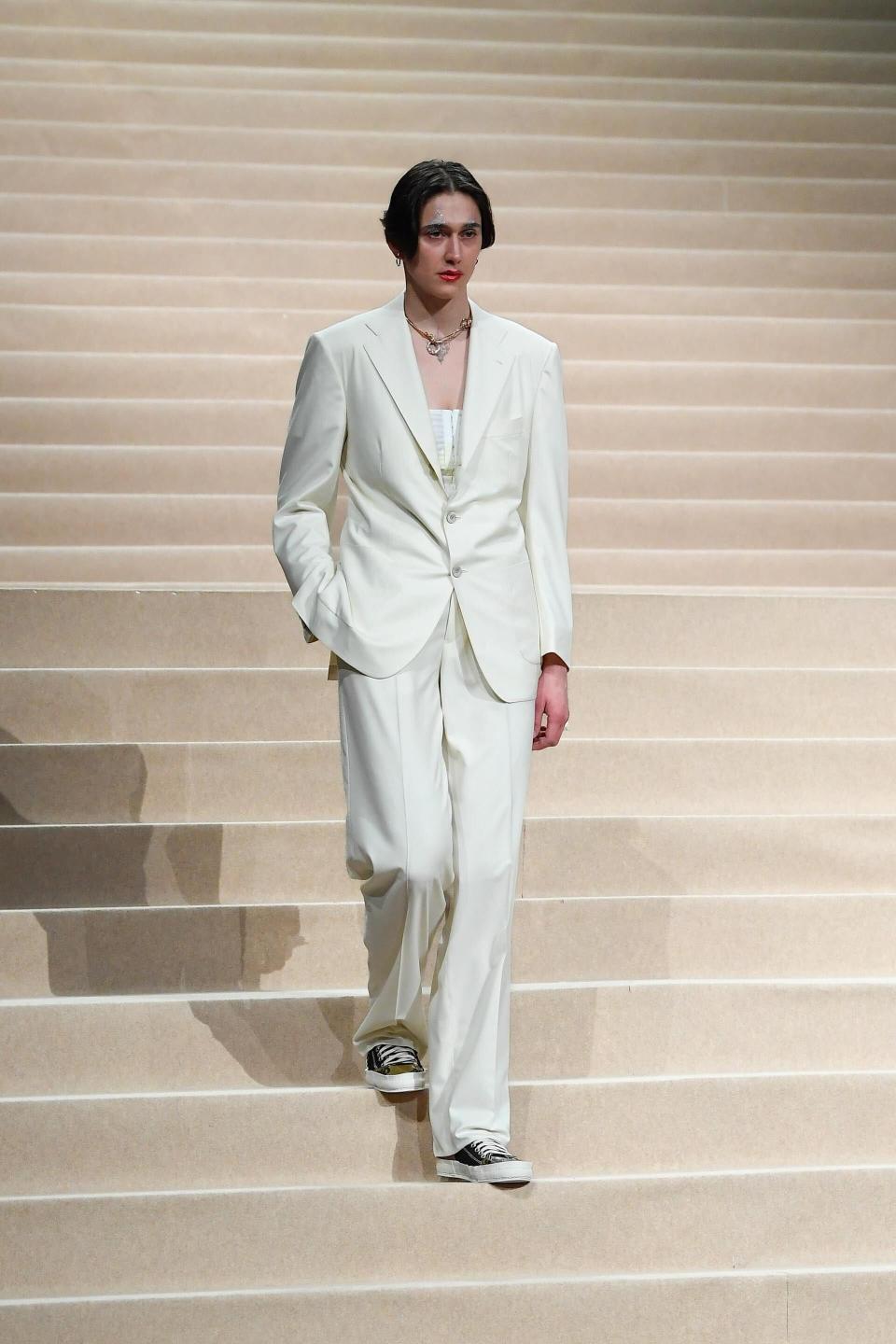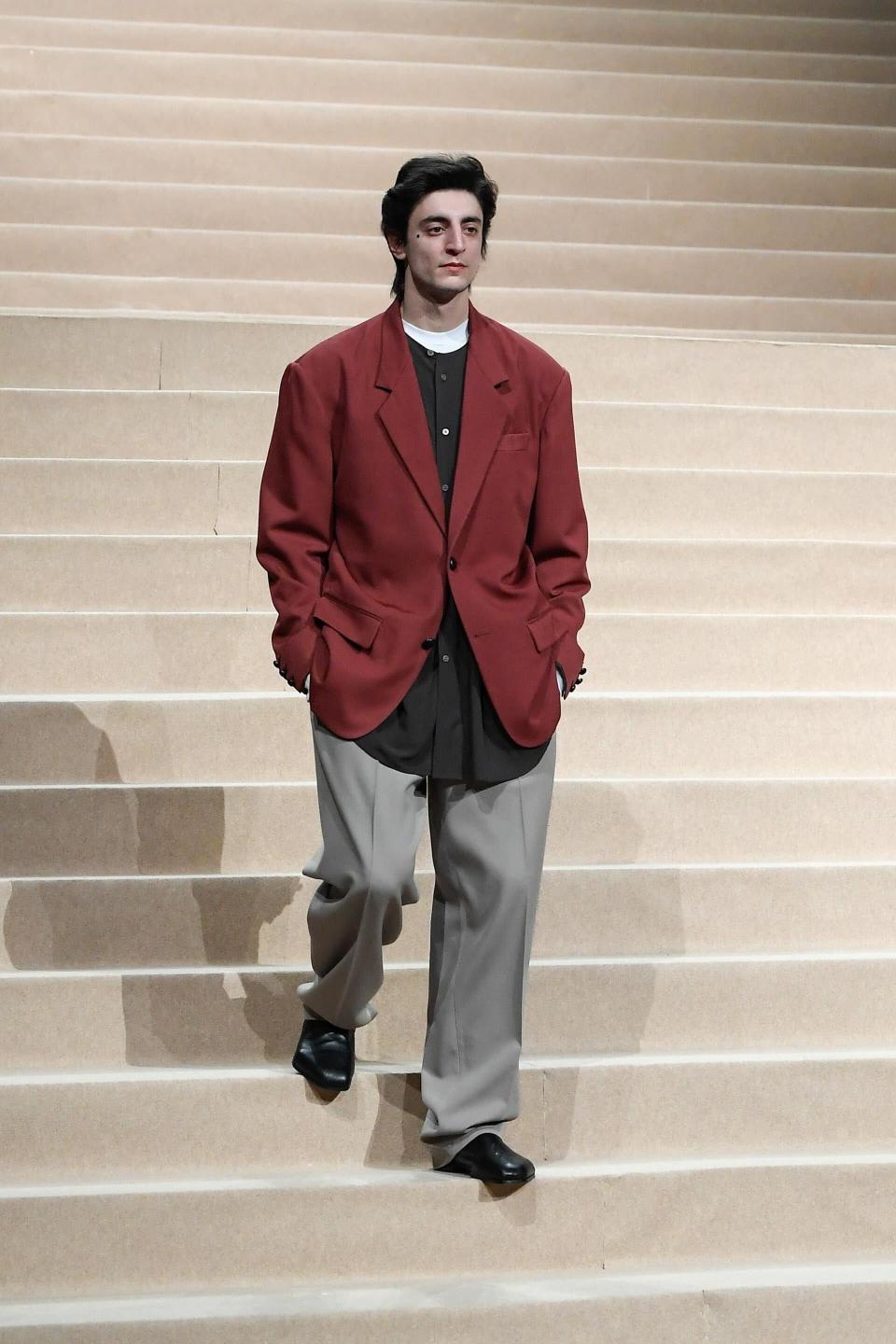Where are All the Young Italian Fashion Superstars?

Getty Images
This is an edition of the newsletter Show Notes, in which Samuel Hine reports from the front row of the global fashion week circuit. Sign up here to get it in your inbox.
Ciao from the final day of Pitti Uomo, where the big story is Todd Snyder’s first runway show in four years. As I wrote for GQ.com, the Iowan put on a clinic in how to make classic clothing look young, revived, and new again—and how to sell a ton of it to Americans. With this collection Snyder is officially re-entering the European market. Will it work on this side of the pond? I think it will. Everybody at Pitti looks like they’re trying to get scouted for a Todd Snyder lookbook (or Drake’s, or Aimé Leon Dore, or new J. Crew). Meaning Firenze is crawling with dudes in unexpected but dignified assemblages of tailoring, vintage, and sportswear, the style all those brands do so well in their campaigns. (You’ve seen them on Instagram—the group ads featuring Heaven by Marc Jacobs-couches-worth of menswear crews.)
The other main event that had Florence talking was Wednesday night’s Magliano show. Founded by a Bolognese native named Luca Magliano, the brand—romantic, philosophical, often super weird—had its live debut five years ago at Pitti, and since then Magliano has become the hottest new name on the Italian menswear calendar. This is not just my opinion: Luca was the runner-up for last year’s LVMH Prize, and the brand has an elite global stocklist that’s rare for brands still in their infancy.

What I wanted to know as I poked around Pitti was: Where are the rest of the young Italian upstarts shaking up the fashion industry?
Italy is, obviously, a major global men’s fashion powerhouse. But compared to other industry capitals, the home of Armani and Prada and Versace has a tough track record in recent years of producing next-generation fashion brands. This is not a question of creative talent, which Italy has in abbondanza. But for some reason, Magliano is one of vanishingly few young and exciting brands to break out of the Italian scene. An Italian editor put it to me bluntly as we walked into the Magliano show. “There is nobody else,” he said, sighing.
Theories abound, but nobody can seem to agree what the problem is. The editor rued the lack of a domestic support system that helps fledgling labels gain traction, a point echoed by several other industry sources. To be fair, the Italian fashion world’s organizing body, the Camera Nazionale della Moda Italiana, does have a prize fund with a decent track record of supporting promising names, like Cormio and Setchu (the winner of last year’s LVMH Prize). But Milan’s peer cities all have similar programs, and plenty of buzzy brands that come up without significant institutional support. (Luca is based in Bologna, but Magliano shows at Milan Fashion Week.)
For more insight, I naturally turned to a couple New Yorkers. “I think it has to do with how the city is,” said Jian DeLeon, the fashion director of Nordstrom Men’s. DeLeon, an all star menswear shopper, speculated that the city’s retail market is too small for new brands to break through. By way of example, he explained that he was in Milan when the Our Legacy x Emporio Armani collection dropped in November. To his dismay, it was not available anywhere. “The fact that Our Legacy x Armani was fire and you couldn’t buy it in Milan tells you what’s happening in terms of, are young people hanging out in the city, and are they shopping?” he said. “Like, you’re telling me I can’t buy an Armani collab in Milan? Retail is indicative of the city.”
The fashion journalist Eugene Rabkin put a finer point on it. “In how many cities in the world do young people have money? In Milan, certainly not. So who is your customer? It’s not like they have a tech industry,” he said. According to a recent Wall Street Journal report about Italy’s sclerotic taxi industry, which answered all of my questions about why I can never find a cab during Milan Fashion Week, the country has the highest rate of youth unemployment in the EU, and Italy’s economy has shrunk 1.5% since 2007.
And then there’s the simple fact of gravity. The Italian fashion world is ruled by a constellation of the biggest and most historic brands in the world. This serves to stifle new energy in a few ways. For one, the most promising Italian fashion graduates seem to go straight to work for the Guccis and Valentinos of the world. After all, at the top end of the luxury industry, Italian men absolutely dominate. Why start your own thing when you can cut your teeth at Prada—as Sabato De Sarno did, before going to Valentino and ultimately landing at the helm of Gucci—and perhaps one day become a major creative director? “The old guard is so entrenched, and it’s against that backdrop that the young can’t really compete,” said Rabkin. “I don’t know why the old guard doesn’t use their resources to promote young talent—maybe they think of them as competition.”

Enter Luca Magliano, who I think has figured out an ingenious way to set his own trajectory. His collection, shown at a sports stadium on the edge of town, did not shy away from the classic DNA the Italian menswear world is built on. In fact, a couple Giorgio Armani looks were on his moodboard (him and Todd Snyder both!). But Luca liberated Armani’s codes of relaxed elegance in his own singular vision. The clothes, he explained backstage, were “a gentle sabotage of the classic shapes.” (This interview took place after a manhunt of sorts for the guy, who usually hides from press and admires alike after shows. He is extremely excitable, talks at a flat out sprint, and rolls his R’s for a mile. A small group of us finally successfully waylaid him on his way out for a smoke.)
This sabotage was felt clearly in soft flaxen blazers that twisted above sweatpants and fluid trousers, often with shirts and cardigans and vests poking out from beneath the hem. A sweatshirt with an ersatz crop was affixed with a formal brooch, approximating the attitude of a stately jacket, but again drawing attention to the midsection. This was by design, Luca explained as he gesticulated with a Marlboro like a professor at a chalkboard. “The clothes, what is happening? It’s happening that they are fluid. It’s happening that they are deconstructed. That they behave with the body in a flirty and weird way. The jackets—there are no jackets anymore, they become something else, they become something fluid and puffy that stays in a certain way around your waist. Why? Because it’s our way to evoke eros. Some kind of erotic feeling. Because clothes have to do with bodies. And we do love the idea of bodies.” Armani might be romantic, but Magliano takes attraction much further.
Luca’s other bright idea was to, in fact, reach out to the old guard and use their resources to up his game. Two of the suits, one beautiful and crisp and white, and another in black, were made in collaboration with the craftspeople at Kiton. “Kiton,” Luca said, “is like the best at making sartorial stuff in Italy.” So the designer reached out. “It was of course weird to start a conversation, because I would call our words allergic somehow,” he said. “Yet they wanted to do it. And of course when you do such a thing it’s not just about producing an object, it’s about starting a cultural conversation.” The suits represent the first completely handmade Magliano pieces, and the process left a lasting impression on Luca and his team. Before heading out for his smoke, he explained that the “workshop” with Kiton fed into “something we are imagining for our future.” Something that might just take Magliano to the next level. “It’s a mission. We are kind of intrigued by the idea of selling less but better stuff, higher stuff. We are in Italy and I mean, we can do that, you know.”
Magliano points toward a tantalizing prospect for the Italian fashion industry: that a new generation can make their mark on global menswear by harnessing their country’s elite resources and rich history. A few minutes before the show started, the Milan-based photographer Bogi—who had a front row seat to the city’s last streetwear boom—weighed in. “That wave,” he said, “is now out. But new energy is gonna come. There will be kids who see what Magliano is gonna do maybe in a year or two or three…” He trailed off and the show began.
See all of our newsletters, including Show Notes, here.
Originally Appeared on GQ


